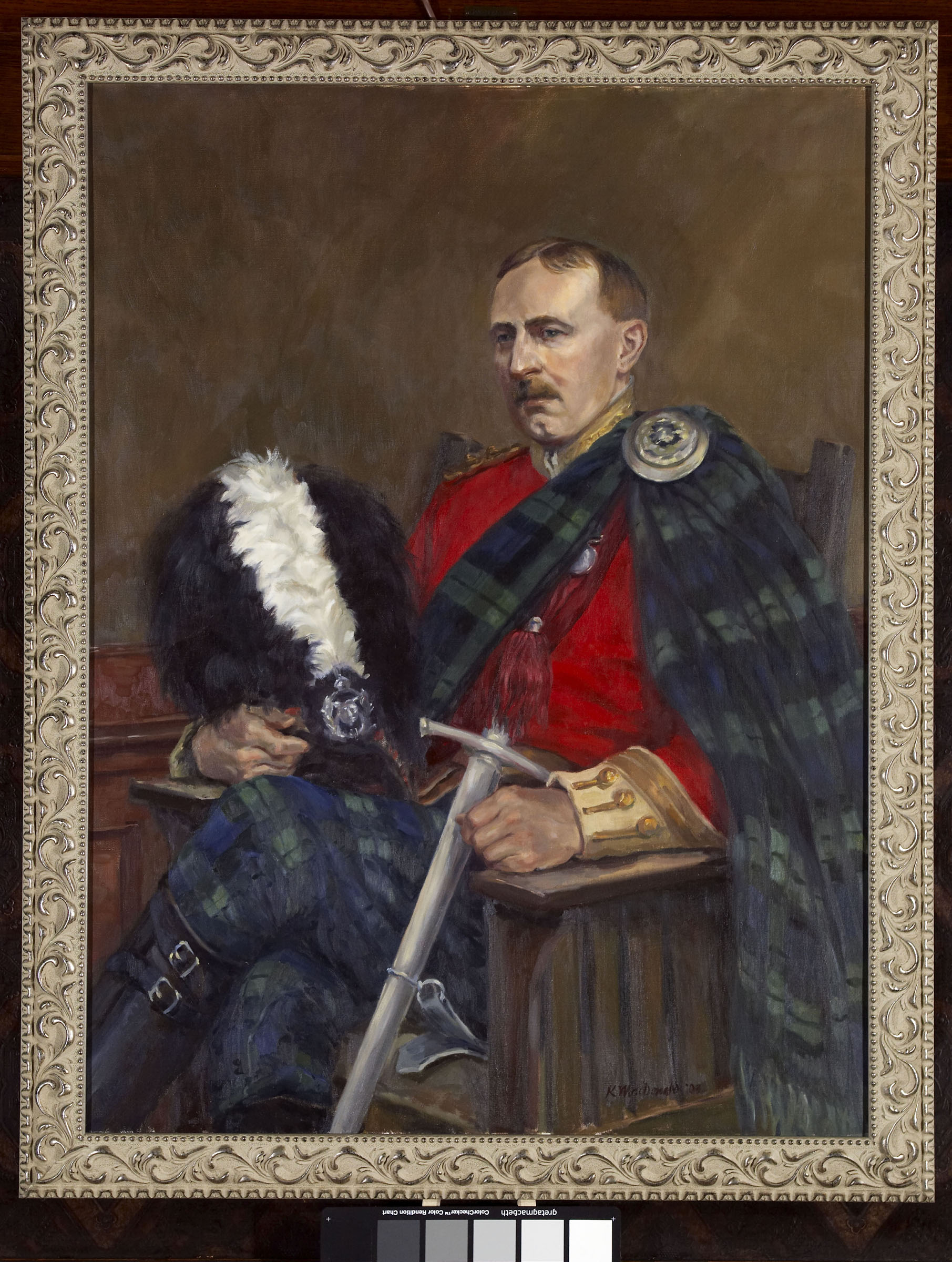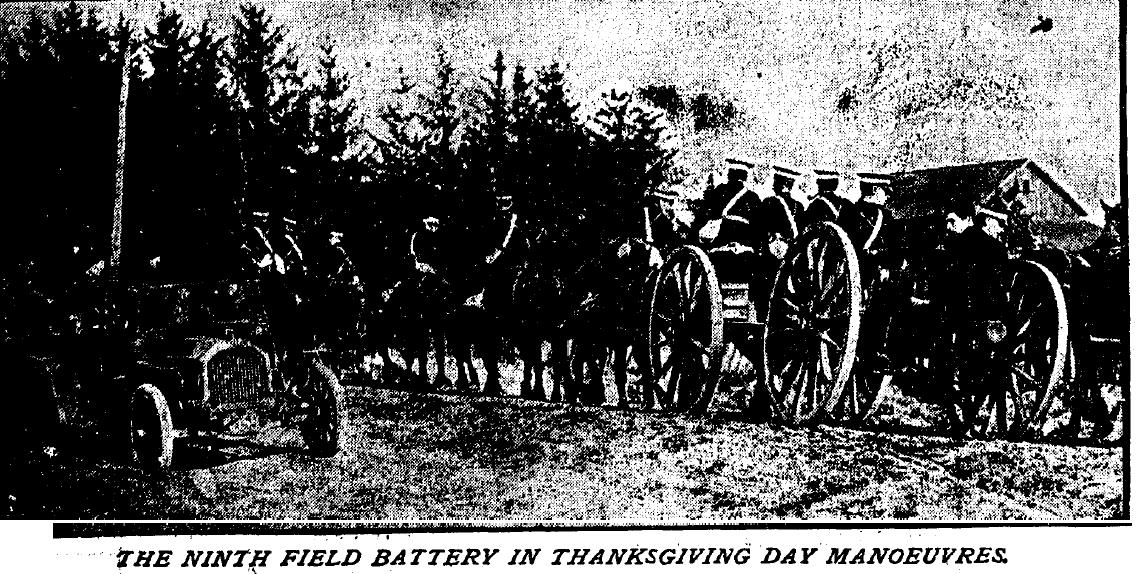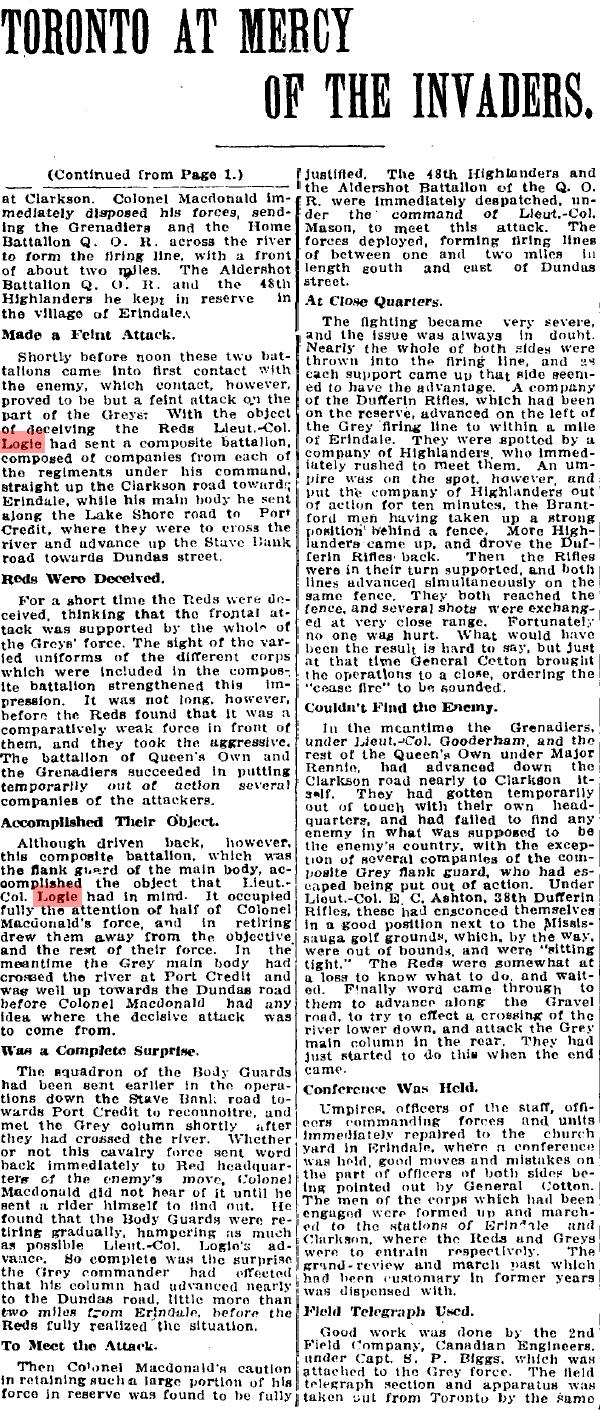It was Monday, October 31, 1910. And for over three hours a fierce engagement took place between two armies – one advancing eastward from Hamilton, the other, in defence of Toronto, advancing westward along Dundas Street, determined to hold the bridge over the Credit River.
The armies met at Mississauga Road. The engagement involved over 4000 soldiers, with the action spread between Stavebank Road, Dundas Street, Clarkson Road and Lakeshore Road. The armies blockaded roads, forded the river, and crossed private fields and fences, all in an attempt to outflank the enemy. There was no mention in the newspapers about it also being Hallowe’en.
Sounds fanciful? Did two armies really clash over the Credit River Bridge on Dundas Street in Mississauga?
Well, it truly did happen … sort of.
By 1909, after the Boer War but before the First World War, local militia units had grown much larger than in previous years. This necessitated larger venues for practical and tactical training. Annually a militia review was held in several of the large cities in Ontario.
In 1910, this review was planned for October 31. Commanding officers of militia units in Hamilton and Toronto decided to organize a combined review and “maneuvers” – they just needed a large enough space to do it.
For reason unknown, they determined that the varied terrain between Erindale and Port Credit along the Credit River Valley provided an ideal place to train. I am not sure if they asked the locals first, mind you, although reportedly dozens of residents turned up at St. Peter’s Anglican Church to watch the spectacle from the hill.
The defending Red Force from Toronto was commanded by Colonel William Campbell Macdonald of the Queen’s Own Rifles, while the invading Grey Force from Hamilton was led by Colonel William Alexander Logie of the 15th Infantry Brigade.

Colonel Macdonald’s objective was to hold the bridge over the Credit River. He set up artillery on the west side of the bridge on Ross’ Hill manned by the 48th Highlanders, while the main defence line consisted of a large detachment of the Queen’s Own Rifles who presented a “magnificent appearance”, and a battalion of 10th Grenadiers.

It should be noted that while only “blank ammunition” was used, the noise of artillery and rifles was deafening at times.
The engagement began at 10 am. Cavalry for the Toronto Red Force were sent out to scout for their enemy, and they snaked their way down the Cedar Swamp Road (Mississauga Road), and across the Middle Road (QEW), and up the Town Line (Winston Churchill Boulevard). Shortly before 11 am, distant shots were heard by the troops guarding the Credit River Bridge at Erindale, believed to be coming from the Clarkson vicinity.
The Queen’s Own, as the advance guard of the Toronto Red Force, proceeded down Clarkson Road (Hammond Road/Robin Drive to Clarkson Road) to intercept the invaders from Hamilton. However, the Grey Force had other plans.
A weakly held picket by Hamilton Grey Force in the Clarkson area feigned resistance and gave way before the Toronto Red Force’s Queen’s Own, but not before stalling the advance of the Queen’s Own.
The Queen’s Own then held their position, expecting a counterattack which never came. By the time the Queen’s Own had taken up their position on Lakeshore Road in Clarkson, unbeknownst to them, the main body of the Hamilton Grey Force had already passed.
They marched swiftly eastward along Lakeshore Road, crossing the Credit River at Port Credit, and proceeding northwards on Stavebank Road to Dundas Street.
Colonel Logie’s plan for the Hamilton Grey Force, realizing that the bridge at Erindale would be heavily protected, was to go around the bridge, make his way to Dundas Street, and attack the Toronto Red Force from the rear. The Red Force was surprised around noon with the booming of a field gun on the hill at Erindale behind them.
Colonel Macdonald of the Red Force, realizing too late what his opponent had done, tried to reorganize his troops to repel this unexpected attack from the rear. A hasty advance by the Red Force encountered a well-entrenched Grey Force that commanded the high ground to the east, and the Red Force was repelled back to the bridge.
At 2 pm the pincers of Hamilton’s Grey Force closed, and the Toronto Red Force was caught in Colonel Logie’s trap. Facing an entrenched enemy to their east, the Red Force was surprised by an advancing Grey Force battalion coming up Mississauga Road. Trapped on the bridge, the Red Force now found itself having to defend its position on two fronts.
At 2:15 pm the “umpires” observing the action declared a ceasefire. Brigadier General W.H. Cotton, who directed and observed the execution of the maneuvers, announced the verdict the next day: the Grey Force from Hamilton claimed victory in the mock battle as they had successfully outflanked the Red Force, cutting off its lines of communication, supply, and escape.
At the end of the day, the tired troops made their way to the Cooksville Fairgrounds to partake in the festivities at the Fall Fair.
Strange but true.






Comments are closed.